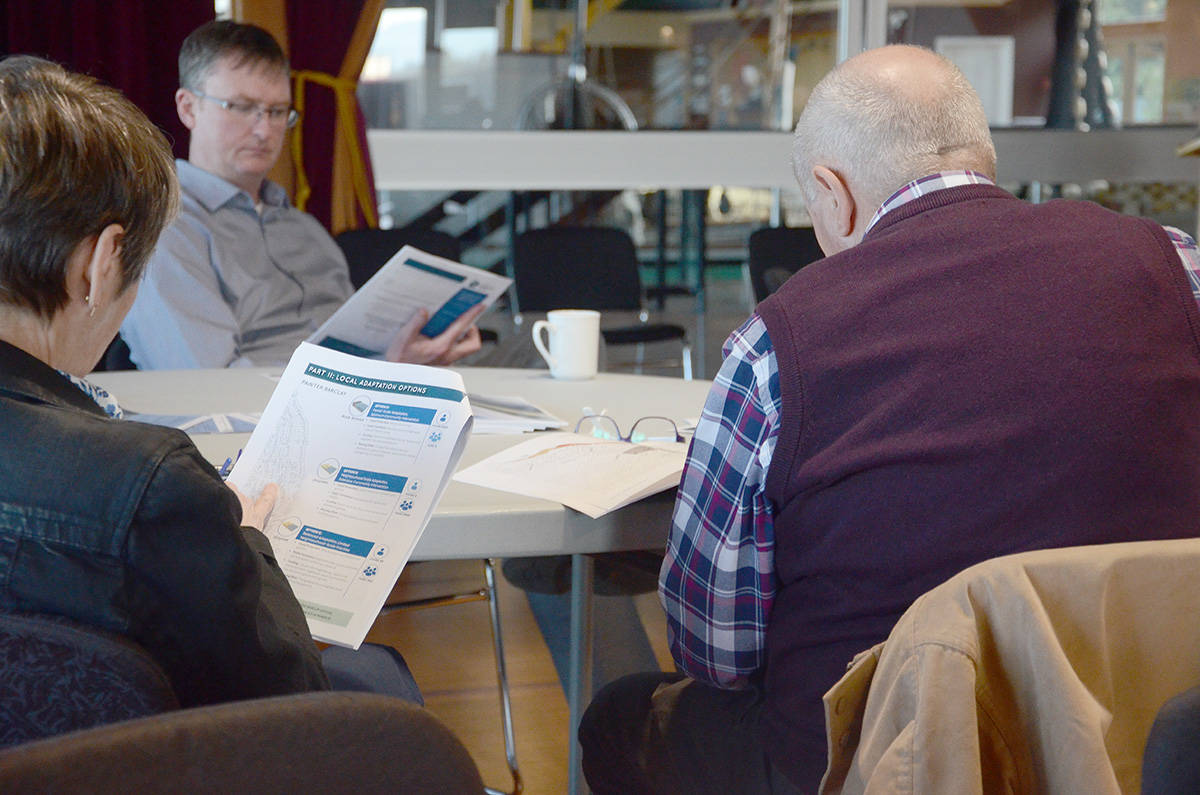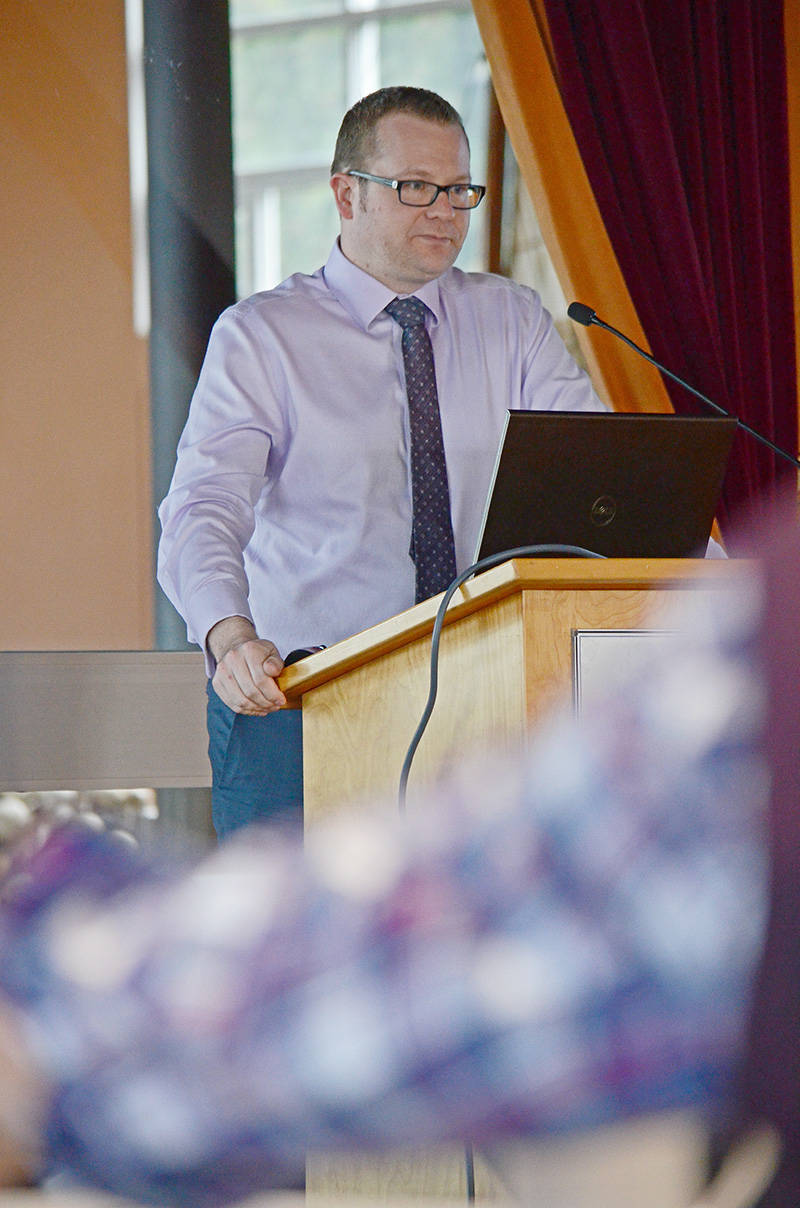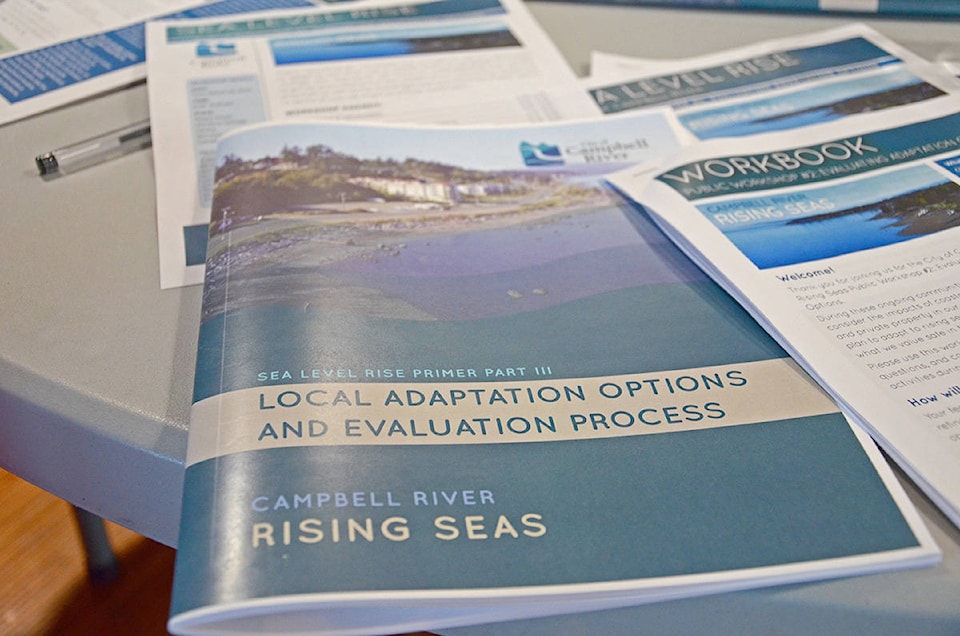The City of Campbell River let the public have its say on how the community should meet the threat of rising sea levels in the coming decades.
On Tuesday night, it held a workshop for people to provide input for long-term plans.
“What we’re here to talk about is what sea level rise is,” said David Reid, landscape architect with Lanarc, one of the City’s partners on the project. “We’re going to ask you to think like a councillor.”
He emphasized that the effects will likely take place over a long time, which should help them when it comes to planning, but at the same time the community should not take the issue for granted.
“Sea level rise is slow, but it is happening,” he said.
The event was held at the Maritime Heritage City, overlooking the very waters in question, and marked the second of three different opportunities for public input. The first was held last November, while a follow-up meeting is slated for late spring or early summer and will include input from this week’s event.
RELATED STORY: Campbell River to host open house on planning for future sea level rise
The City is forecasting an expected rise of one metre by 2100. As Grant Lamont, senior coastal engineer with Northwest Hydraulic Consultants, said, some jurisdictions such as New York City or San Francisco are using models that call for even greater sea level rise.
One issue that arose at the meeting is the effect of “uplift.” The Mirror asked Chris Osborne, the City’s supervisor of long-range planning, before the meeting about government data that show the sea level in Campbell River has been going down. In fact, a world map of the U.S. National Oceanic and Atmospheric Administration shows some areas as having experienced sea level rise and some, like parts of the B.C. Coast, showing a decline in recent decades.
This, Osborne said, has been due to the effect of uplift, by which land masses rise as glacial ice melts. However, this trend, he added, is not expected to last indefinitely.
“We can’t rely on uplift forever,” he said.
He added that the uplift effect has been included in modelling.
“Our engineers have factored that,” he said.
Lamont told the participants the partners on the project have looked at a number of factors such as joint probability for high water levels and waves to combine, or the changing nature of the sea-side area in the community. He pointed out the 40 centimetres of uplift can also be a bit of a “red herring” in terms of planning by communities because of tectonic activity, particularly a large earthquake.
“They could get all their sea level rise in an hour,” he said.
RELATED STORY: Vancouver Island overdue for the big one, can also expect mega-thrust tsunami
As far as the water, they have to consider the effect from thermal expansion, whereby water level can rise from increased heat and expansion, as well as from melting sea and glacial ice.
Following the presentation, the roughly 2o participants on-hand took part in working groups to lay out the options. A workbook for the project identifies the main headland areas of the community: Painter Barclay, downtown, Sequoia Park, Willow Point and the southernmost part of the city. It also notes the types of choices the community will have to make – for example, putting in a sea wall versus protecting ocean-side views – and to what extent these mitigating efforts should happen through government, through private land owners or somewhere between the two options. The public input from Tuesday will help influence proposals for the final event to be held in few months.


